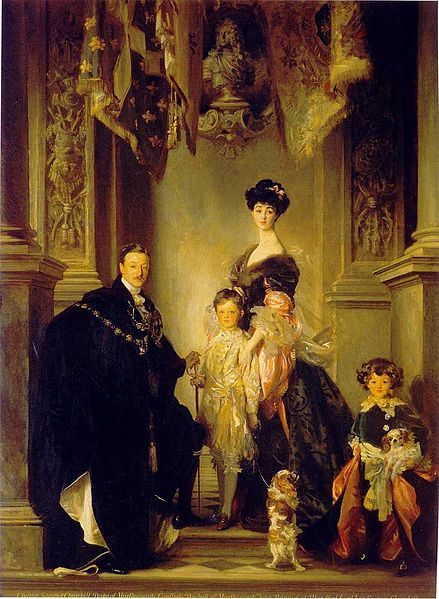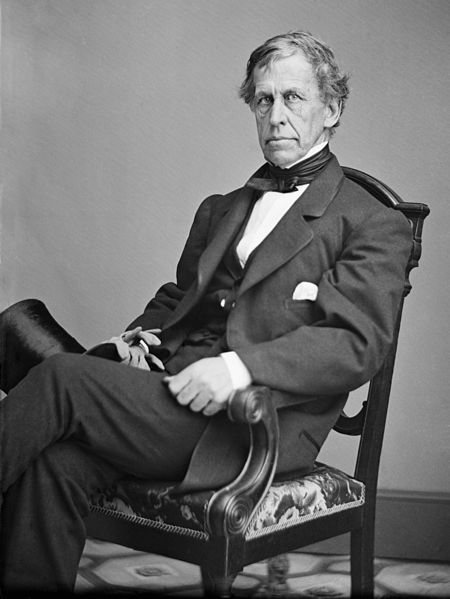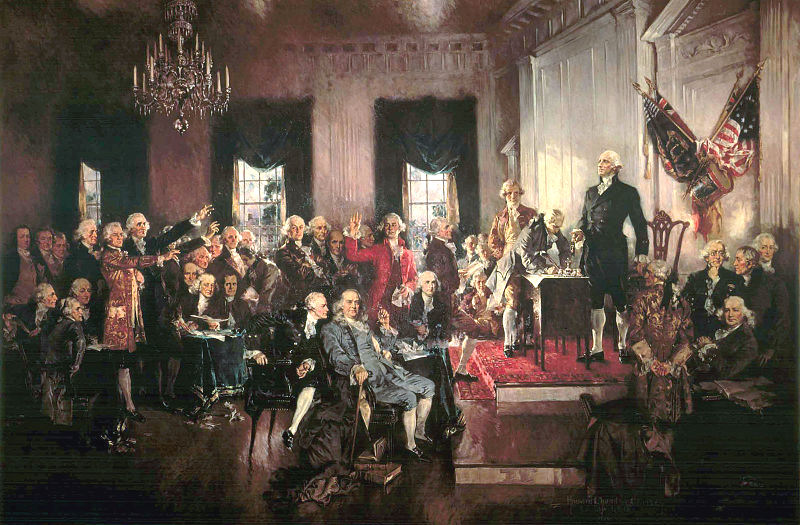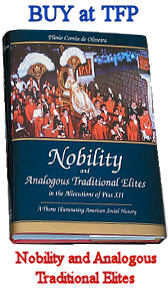American society, as all others, is hierarchical. It could not be otherwise, since the existence of elites is not only a natural occurrence in every organized social body, but constitutes an element essential to its proper functioning.
According to William Domhoff, professor of psychology at the University of California at Santa Cruz, “scholars also have done away with the classless society myth…. [America’s] social structure is made up of strata that shade off one into the other until we arrive at the highest level.”[1]
W. Lloyd Warner further explains: “It is clear to those of us who have made studies in many parts of the United States that the primary and most important fact about the American social system is that it is composed of two basic, but antithetical, principles; the first, the principle of equality; the second, the principle of unequal status and of superior and inferior rank….
“….Status systems must always exist…. The only possible choice for Americans is not between their status system and a perfect system of equality but between their kind of hierarchy and some other.”[2]
Herbert von Borch, an author of German origin, comments on the less than accurate European perception of the United States as a democratic and egalitarian country: “To the foreign observer, American life appears at first sight as egalitarian. He sees a colorful, vital, mobile surface, as compared with the old incrustations of European societies…. Under the surface, then, there unfolds a fascinating patchwork of consciously cultivated group distinctions, involving…deeper forces of separation.”[3]

Potrait of Charles Spencer-Churchill, 9th Duke of Marlborough, his wife Consuelo Vanderbilt, Duchess of Marlborough, and their sons John, the 10th Duke of Marlborough, and Lord Ivor Spencer-Churchill.
The presence of hierarchical social classes in the United States is stressed by Pessen: “Yet for all the undeniable singularity of American history, the evidence is abundant that classes, class lines, and distinctions of status do exist and have always existed here, as elsewhere in the modern world.”[4]
Such class distinction does not restrict itself to persons and families of great fortune, but touches all of American society. As C. Wright Mills explains: “In every town and small city of America an upper set of families stands above the middle classes and towers over the undying population of clerks and wage workers. The members of this set possess more than do others of whatever there is locally to possess; they hold the keys to local decision; their names and faces are often printed in the local paper; in fact, they own the newspaper as well as the radio station; they also own the three important local plants and most of the commercial properties along the main street; they direct the banks. Mingling closely with one another, they are quite conscious of the fact that they belong to the leading class of the leading families….
“…So it has traditionally been, and so it is today in the small towns of America.”[5]

Rear Admiral Charles Wilkes, officer of the Federal Navy, nephew of St. Elizabeth Ann Seton. He led the United States Exploring Expedition, 1838-1842 and commanded the American ship in the Trent Affair during the American Civil War.
We have, then, a society which, while not using titles of nobility, is no less hierarchical than European society. This social differentiation is obvious, for example, in New England, the original nucleus of English colonization, which remains the center of some of America’s oldest traditions.
In his analysis of social classes in this important region, W. Lloyd Warner writes: “Studies of communities in New England clearly demonstrate the presence of a well-defined social-class system. At the top is an aristocracy of birth and wealth. This is the so-called ‘old family’ class…. The families into which they were born can trace their lineage through many generations participating in a way of life characteristic of the upper class….
“The new families, the lower level of the upper class, came up through the new industries—shoes, textiles, silverware—and finance…. Except that they aspire to old-family status, if not for themselves then for their children….
“Below them are the members of the solid, highly respectable upper-middle class…. They aspire to the classes above and hope their good deeds, civic activities, and high moral principles will somehow be recognized…. Such recognition might increase their status and would be likely to make them members of the lower-upper group….
“These three strata, the two upper classes and the upper-middle, constitute the levels above the Common Man. There is a considerable distance socially between them and the mass of the people immediately below them.”[6]

Armory of the First Troop Philadelphia City Cavalry, is the oldest military unit in the US that is still in active service. It is also the only military unit in the US that owns its own Armory building, built with private funds in the Rittenhouse section of Philadelphia.
In the absence of titles of nobility, other expressions were coined to designate the Old Families in various cities and states. We have, for example, the Boston Brahmins, the Proper Philadelphians, the Knickerbockers or the Metropolitan 400 of New York, the Proper San Franciscans, the Genteel Charlestonians, the First Families of Virginia, the California Dons (designating families of old Spanish aristocracy), and so on. Many of these families still own their original ancestral mansions.
In conclusion, these sociologists affirm that it is impossible to understand American society without considering its hierarchical character, as these words of Warner indicate: “It is impossible to study with intelligence and insight the basic problems of contemporary American society and the psychic life of its members without giving full consideration to the several hierarchies which sort people, their behavior, and the objects of our culture into higher and lower social statuses. They permeate every aspect of the social life of this country.”[7]
Plinio Corrêa de Oliveira, Nobility and Analogous Traditional Elites in the Allocutions of Pius XII: A Theme Illuminating American Social History (York, Penn.: The American Society for the Defense of Tradition, Family, and Property, 1993), Appendix I, pp. 155-158.
[2] W. Lloyd Warner, American Life: Dream and Reality, rev. ed. (Chicago: Univ. of Chicago Press, 1962), pp. 127, 129.
[3] Herbert von Borch, The Unfinished Society (Indianapolis: Charter Books, 1963), pp. 228-229.
[4] Edward Pessen, “Status and Social Class in America,” in Luther S. Luedtke, ed. Making America: The Society and Culture of the United States (Washington, D.C.: U.S. Information Agency [1987] 1988), p. 270.
[5] C. Wright Mills, The Power Elite (New York: Oxford University Press, 1956), p. 30.
[6] W. Lloyd Warner, Social Class in America: A Manual of Procedure for the Measurement of Social Status (Chicago: Science Research Associates, 1949; New York: Harper Torchbooks, 1960), pp. 11-13.
[7] Warner, American Life: Dream and Reality, p. 68.






